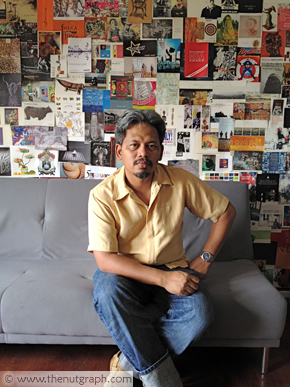
MENTION the name Bayu Utomo Radjikin in art circles and you will probably get smiles, especially from the many young artists he has mentored. The artist and sculptor, born in 1969 in Tawau, Sabah, has won various accolades and awards for his abstract and cultural works.
His artworks are collected by many prominent institutions such as the Kuala Lumpur National Art Gallery, Singapore National Art Museum and Japan Foundation Kuala Lumpur. He began his career in the arts in 1988 after graduating from Universiti Teknologi Mara (UiTM) with a BA (Hons) in Fine Art.
With four other leading Malaysian artists, Bayu set up the Matahati art collective in 1989, a group that has taken their work overseas in a unique exhibition called Matahati ke Matadunia. Bayu also founded the House of Matahati art gallery, which exhibits and promotes the works of upcoming Malaysian artists.
Known for his evocative works dealing with local and international social commentary as well as the “Malay warrior” identity, Bayu speaks to The Nut Graph at his Kuala Lumpur gallery on 16 Feb 2012.
TNG: Could you tell us about where you were born, and your childhood memories?
I was born in Tawau, Sabah to Javanese parents. My father was a teacher until the end of his career, but before that he was doing a lot of plantation work. So we were moving around a lot until we ended up in a logging camp village called Kem Brumas. My dad taught in a primary school there. I remember the village was in the middle of the jungle, so we saw a lot of greenery.
After school, you could just take off your clothes and go into the river beside the village. The village was a migrant village; people from all over Sabah came to work as loggers there. They did not own their house, and if they got another job they would move out of the house and the village. So you were constantly meeting different friends. Suddenly I would have new neighbours, and then after that they would move out.
Tell us a bit about your family and your ancestry.
My grandparents on both sides were from Indonesia, Banjarnegara, Jawa Tengah. We still have family there, and once in a while my parents go there to visit relatives.
I never much connected much with my ancestry, even though we knew we were Javanese. Where we are from, people had to work hard. It’s not a comfortable life, so people were more concerned about bringing up their kids. They did not really think about where they came from, that’s how I see it. So we did not really know much about our grandparents’ histories. It was mentioned, however, that my maternal grandfather was a soldier.
To me, I felt that Sabah was its own country, where people from the outside came in. Outsiders from the Philippines, from Indonesia, and other parts of the region moved there because they were looking for a new, better life. So I think they were not trying to forget the past, but to think less about it and more about the future – building things up for their children and creating new memories.
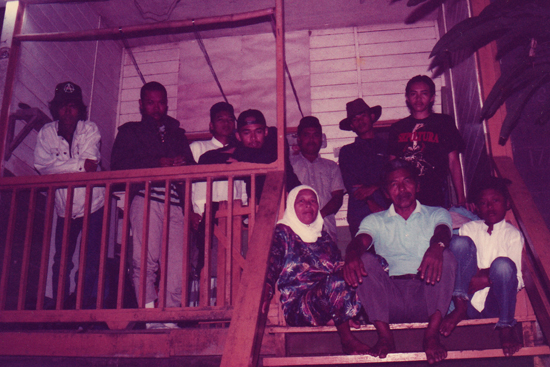
So where did your passion for art come from?
In primary school I really liked drawing, like all kids. But I could spend hours drawing, and go on without eating. I liked to copy images, and after a while some of my teachers always asked me to draw things for them.
I remember one teacher from the Philippines, she was the one who clarified for me that I was into drawing. She taught English and other subjects and asked me to draw pictures so students could understand her classes better. And she paid me money! (Laughs)
But I still did not take it seriously, and was not concerned with it in secondary school, actually. I was a normal student, I had slightly better results in the SRP examinations and went into the science stream. We had no choice – our parents wanted us to be the best, and the science stream seemed to offer better opportunities. While I liked biology, I just didn’t get mathematics and physics, and additional math horrified me! So I took art as a subject for SPM, and got good results for it. I later went into UiTM’s school of arts.
Your work deals with very interesting notions of identity. When did you actually start thinking of these concepts – of being Malaysian, of being Malay?
I never thought of myself as Malay when I was young, it was only when I came here (to Peninsular Malaysia). And these concepts started really taking shape towards the end of the 1990s, not during school. During school all the artists had to take on a subject matter in their work, and so I took on global events such as poverty, war and social issues. I held a solo show in 1996, which had a very good response. People liked it and wanted to see more. But something was happening to me. After I did the solo show I felt like I could not take it anymore. I was constantly looking for images, and every time I flipped a newspaper or watched television, it was so intense.
Maybe I was painting some guy in Somalia in poverty, and then people would say the work was good or buy it. But at one point I felt like it didn’t connect to me anymore, and that it didn’t feel right. I felt like I was not expressing the entire picture, even though in the arts, you are contributing on a level to help or move people. Maybe I was young, and I just felt it was too much. I had become an image hunter, and so, after my solo exhibition, I took a break and did abstract.
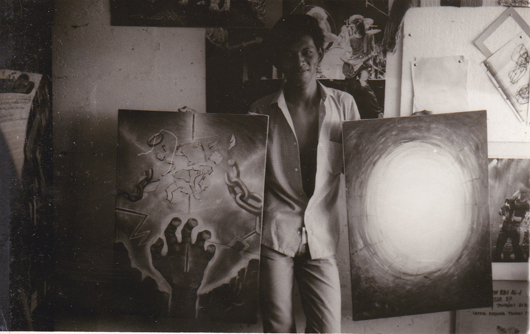
And this was the period you got into doing self-portraits?
That was the period I was rethinking what I was doing, and rethinking myself. I did a lot of self-portraits, one whole exhibition. It was asking about my identity, about being Malay. It is quite interesting when people talk about “your race”. Because race is something that happened to you, it is not something you planned. So how do you deal with it so you feel comfortable?
Talking about race is a very thin line, because some people will call you racist if you don’t deal with it right. But what is being Malay? What is race? Why is it significant to you? For some people it is very significant, but I think it becomes significant only when you are talking about bigger volumes (of people). But if I think about myself doing anything, for example, it has nothing to do with me being Malay.
So after some thought, I began thinking that the Malays always connect strongly to the old zaman kesultanan Malacca Malay days. All the sultans, panglima, Hang Tuah and Hang five (warrior brothers) – the story of being Malay anchors on that era. But that has nothing to do with Malays now, so why is it so strong? At certain points you feel that these stories sound like myth, but you feel connected because there is a spiritual connection or bond there.
Was this the inspiration behind your “Malay warrior” series?
If we talk about the “Malay warrior”, what are your perceptions? The Malay or Chinese warrior looks a certain way because of costume, for example. But what if I don’t use a costume? What if I use normal clothes to represent this? So I asked my models to take a normal kain and pose with it in a certain way. People would look at my drawing and say, “This is a Malay warrior.” But basically, they were modern Malay boys, resembling something that had elements of the Malay warrior. Some normal hand poses would get a response, like: “Oh, that is silat!”
So my perspective is actually that the Malay is looking for images of the ideal Malay. They want to find things that represent this, they want to connect to the ideal. And I think a person likes to glorify a race so they can be proud to be part of that race. That is why I think the story of Hang Tuah will never end, because it has those images, and those elements of duty and loyalty. We do not know the actuality – they could [have been] normal people, just like us. But we only have the glorified stories that remain, and those are the only ones you want to take.
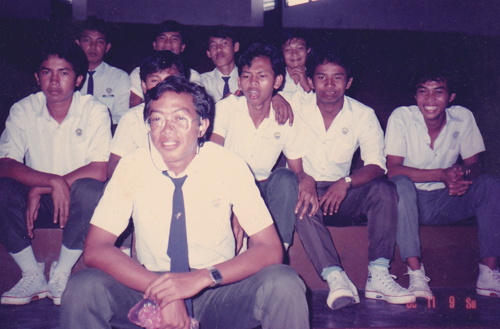
And how did all of this shape your own thoughts about being Malaysian?
I think some people do not understand but are proud of their own race, and they seek out good qualities. But now when Malaysians talk about race, it is like people are trying to create a shield from others.
We want to possess and own it for ourselves, and, at the same time, we want a shield from others?
Yes, even if we don’t really understand it. There are those who deal with the Chinese, but they may only interact and not really understand them. I may know them, for example, but I don’t really understand their culture or perspective.
Many just keep saying other races “are like this” or “they are like that.” But when you really make friends with the Chinese and when you really understand them, you are actually allowing them to enter your being. You are proud you are Malay and can embrace the Chinese. These are the good elements people should have more of, not that certain things are being threatened and all that. The point to me is that if we do not embrace each other, this “being Malaysian” will not happen. We can say we are Malaysians because we are staying on the same land, but it is not like that on the inside. You are born here, but you still do not accept other races to be a part of you.
Some would say we Malaysians are very preoccupied with the celebrations, the rituals, the shows, but you are talking about acceptance, and something more inward.
I think the point is to understand the quality of other races and not deny them. When you have that, it does not matter whoever comes to Malaysia – they can be part of Malaysia and be Malaysian. Otherwise, you know, you can always say you are Malaysian, but you will always question yourself and ask, “How Malaysian exactly am I?” In what areas do you think you are truly Malaysian? Just because you were born on this land? I think a lot of people think that, because I know I think that, too.
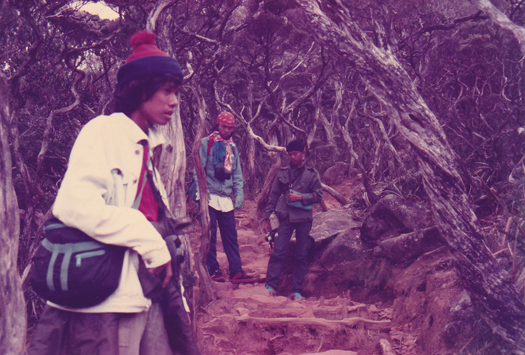
You are a mentor to so many young artists and creatives. Do you see any efforts to break down these barriers or fences?
When I’m doing my work I discover something, and I feel it is important to me. Other people might discover things their own way. It has got to be that way. The good point is that we don’t have a major conflict yet, for example, the way they were killing each other in Indonesia (in West Kalimantan). But in a way, it is because there is no conflict that people deal with silently. We can put it away because it is not urgent, nothing happened. In Indonesia, they really had to deal with that and really understand.
I think racism is like sin. Everyone has done it, but in different degrees. Whether you like it or not, everyone is a racist to a certain level, their own levels. How you deal with it is the issue. Why, for example, do you have to say “that Chinese guy did that to me”? Is that necessary? Why not just “that guy”?
What are you hopeful for when it comes to Malaysia?
The country is moving, you cannot predict the future. You can build it up but we will never know. You may say the country needs certain things at one time, but in another time that perspective may be old-fashioned and not suitable for the future or the next generation. They will have their own perspectives. So I think what Malaysians should be concerned with is getting to know themselves better. Embrace everybody better. ![]()
The book Found in Malaysia Volume 2, which was launched on Malaysia Day 2011, is now available in bookstores for RM50. It features previously unpublished interviews with Asha Gill, Lillian Too, Khairy Jamaluddin and Baru Bian. Volume 1 of Found in Malaysia, featuring 54 earlier interviews, is currently in its second print run and retailing at RM45.


Chia says
Why is it that someone with Indonesian parents can be automatically classified as bumiputera, whilst a Chinese whose ancestors have been in Malaysia since 1880, 6th generation in this country essentially, are still classified as pendatangs? Can Bayu and others like him really be considered Malay if his parents were not born in Malaysia?
anon says
EVER HEARD OF THE UMNO MALAY SUPREMACIST APARTHEID SYSTEM?
We are living in it.
stewoolf says
The interviewee was granted citizenship and Bumi status with parents from Java. My grandparents from China who founded the first British settlement in mainland Sabah more than a hundred years ago, were labelled “pendatang”. Half of my family and Form Five classmates in the eighties left for Australia, New Zealand, Singapore, Hong Kong, the U.S., Canada, etc., yet Sabah population has tripled since. Grossly underdeveloped. Beautiful land. Sad story.
Farouq Omaro says
In Sabah, the Bugis, Javanese, Cocos Islanders, Banjars, Tausugs and the Butonese are not Bumiputeras and therefore cannot buy Native Title lands. Please note.
stewoolf says
Malay is a “kaum pendatang” in Sabah. I believe Mr Bayu would agree that before the 1990’s the Malay identity did not exist in Sabah. I realised that when I was living in KL for a year in the 1980’s after growing up defining Malays as dark-skin, Malay-speaking and Muslim. For example, Bajau who fits this definition, is NOT Malay! (I did meet some genuine Malays in border towns near Brunei, identifying themselves as Brunei Malays, as like Sarawak Malays.) Only after the Mahathir-Pairin confrontation and UMNO established in Sabah, then “Malays” became a substantial race in the state. Even some Kadazans who converted from Roman Catholicism to Islam identified themselves as “Malays”.
Farouq Omaro says
Terima kasih bang Bayu. Di Sabah tiada Bangsa Melayu. Kita semua Sabahan!
chia says
stewoolf,
This is what keeps me from returning to Malaysia. I have nothing against Bayu himself. But unfortunately there are millions like him who steal bumiputera rights under the pretense of being Malay.
Because hold on a second here: Article 160 defines a Malay as being one who “professes the religion of Islam, habitually speaks the Malay language, conforms to Malay customs and is the child of at least one parent who was born within the Federation of Malaysia before independence of Malaya on 31 August 1957, or the issue (off-spring) of such a person.”
Was one of his parents born in Sabah? It seems not. And IF this is really the case, then by the definition of Article 160, Bayu is constitutionally NOT Malay. To gain admittance to UiTM and obtain other bumi benefits is cheating…. We know many others are doing the same. What does BN and other bumi rights defenders have to say about this?
To The Nut Graph – I read your articles because you interview interesting people. You try to portray how multicultural our country is, and get everyone to say how racism is bad. Unfortunately, you seem to interview many with undeserved bumi rights and in the case of Joanne de Rozario, ones who think they actually deserve these rights more than others. I can’t help but be bitter reading these interviews, they make me want to stay away from Malaysia for good.
aiyo says
Man is complicated.
Maybe the way forward which is still far off is like what the author said, a journey of self discovery. When one reaches the gate of truth, like the end of the rainbow, there is really nothing there.